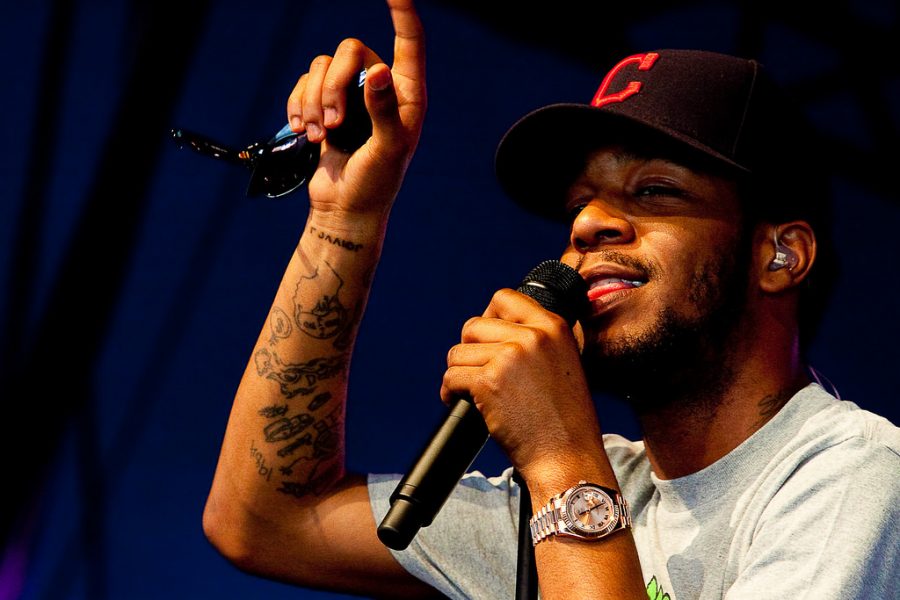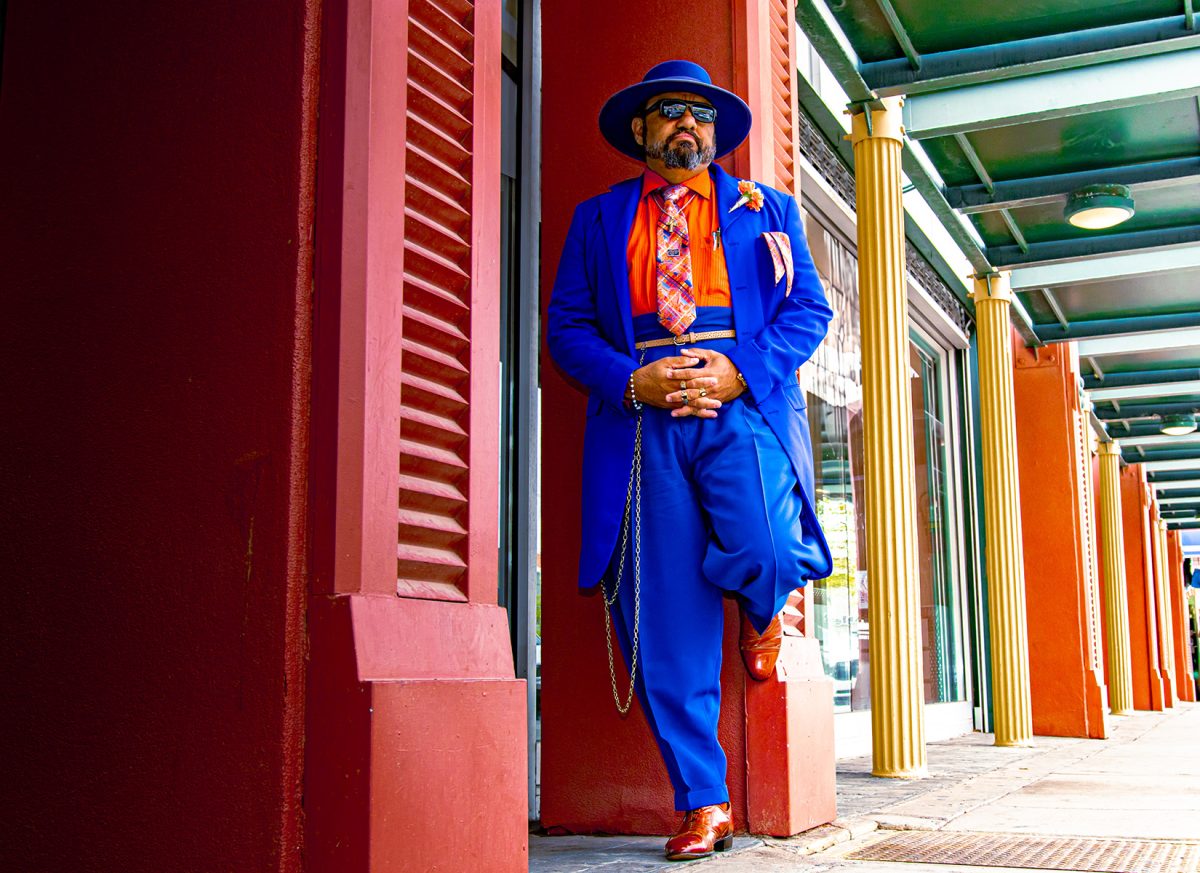Scott Mescudi, as known by his stage name Kid Cudi, will be releasing his sixth studio album on Friday, Dec. 15, titled “Passion, Pain, & Demon Slayin.’”
Cudi started work on the album earlier this spring and rumored bringing back help from his old team, Plain Pat and Ratatat. He announced via Twitter that he would be dropping the album in the summer, but it spilled into the fall. He released two singles leading up to the album—“All In,” which sounds like an excerpt from his third album, “Indicud,” and “Goodbye,” which did not make the cut for the album, according to the album track list.
On Sept. 26, Cudi tweeted the album setlist, which reaped interesting features, such as Andre 3000, Pharell, and Travis Scott. Instead of releasing the album in late September, Cudi had to push the album back due to sample clearances. Also, in October, Cudi announced that he would be checking himself into rehab for suicidal thoughts. He returned to the music scene in early November as he performed at Complex Con and joined Kanye West for one of his tour stops.
While most were very disappointed with Mescudi’s experimental album, “Speedin Bullet to Heaven,” Cudi appears to be reverting back to some of his roots on this upcoming album. Also, it appears as if Cudi is also revitalizing his sound yet again.
Before this album comes out, there are too may ex-fans who will already count this out. However, it is not fair to base his artistry on one experimental album; rather, this album should definitely be regarded and it is by far one of the most anticipated projects of the year.
Lets take a trip back to what brought Cudi’s face into the limelight: “Man on the Moon: The End of the Day.” MOTM is considered one of the most revolutionary albums of 21st century hip-hop. Its excellence is obvious.
But its excellence was not understood immediately.
Kid Cudi had risen to the hip-hop scene by releasing his claim-to-fame single, “Day ‘n’ Nite.” The up-beat track caught immediate waves. With the help of Plain Pat on the beat, Cudi soared up the charts for the single and made “Man on the Moon” one of the most anticipated albums of 2009.
When he released his inaugural project, it did not impress critics at all. Pitchfork writer Ian Cohen called the body of work “a missed opportunity instead of a non-starter.” The New York Times described it as a “colossal, and mystifying, missed opportunity, misguided if it is in fact guided at all.” Even Slant magazine chimed in on the hate, saying, “From its bombastic title to Common’s annoying narration, Man on the Moon vies for both a bigger pop platform and indie credibility.”
Oh, how wrong they were.
Now seven years later, “Man on the Moon” is used to measure excellence to alternative hip-hop artists. It felt like a branch from Kanye’s “808s and Heartbreaks,” minus the auto-tune, fused with the emotional lyrics of Nirvana. The record brought a balance between emo, indie, and rap. Most of all, “Man on the Moon” spawned so much more.
MOTM pioneered the way for experimental hip-hop artists to break the barriers set by the stereotypical rap artists. It allowed artists, such as Wiz Khalifa, B.o.B. and Mac Miller to make music that was more widely accepted in the early 2010s.
It also highly influenced new alternative hip-hop artists, such as Travis Scott, Chance the Rapper, Lil Yachty, Raury, and Frank Ocean. Without Cudi, rappers like Young Thug, Rich Homie Quan, and Migos may have never divulged into the field of dark electronic beats.
He even had a direct influence on Kanye West—possibly making Ye more apt to experiment with new sounds, such his sinister, electronic style on “Yeezus.”
There had not been a rapper who flaunted such somber distress on a piece of work until “Man on the Moon.” Better yet, to an extent, there had not been a Midwest hip-hop artist who melodically expressed his feelings through a roller coaster of skits, four separate acts, different personas and simple flows as Cudi did.
It was so simple, but also so mindful.
The album’s first act, “The End of Day” opens up unexpectedly slow and dark with “In My Dreams,” which introduces the dream-like world Mescudi experiences. It sets the tone for the somber, mysterious journey of an album. Then, gears shift on “Soundtrack 2 My Life,” which is anthem-like featuring so many strong flows.
It was a perfect glimpse into Cudi’s inner demons that he deals with, such as his killer line, “I tried to think about myself as a sacrifice/Just to show the kids they ain’t the only ones who up at night.” “Simple As…” resembles a traditional rap song, including a structured beat, listenable flow, and solid hook.
In depth however, it is unlike a normal rap track. Cudi’s vocals are lowered to compliment the different beats and samples throughout the duration. He uses three different background voices to add an erratic aesthetic. Yet, he does not change his pitch on the hook, which sounds entirely sought out.
“Listen now, I don’t have nobody,” is the first words heard in the second act, “Rise of the Night Terrors.” On “Solo Dolo,” Cudi took a risk on an orchestrated beat and exceeded the expectations. Through the subdued and nearly dragged out four minutes, he brings the album at a low with the idea of loneliness. He amps up the energy on “Heart of a Lion”—which is the most inspiring song on the album with his amazing lyrics. The whiny-like sound of “My World” is also a risk that Cudi takes and succeeds on.
His drugged-esque stylishness Cudi brings on act three, “Taking Trips,” adds elegance and darkness to “Day ‘n’ Nite,” “Sky Might Fall,” and “Enter Galactic.” The acid beats and keys mix with synthesizers on the act and enhance the upbeat tracks.
Cudi hits a low on “Stuck,” which is the fourth act on the record. He talks about night terrors and darkness on “Alive,” and expresses his emotional distresses on “Cudi Zone.” His sarcastic theme, “Make Her Say,” sounds like a laugh at all commercialized music, and resembles a track off a Kanye tape. The “stuck” theme transitions on “Pursuit of Happiness,” where Cudi raps about dreaming one day to obtain true happiness.
Finally, Cudi wraps up the album with two back-to-back easy going, life-loving tracks, “Hyyerr” and “Up, Up, and Away.” The two tracks in his fifth act, “A New Beginning,” are very uplifting, contrary to the darkness shown in other acts.
After its release, Cudi re-released his titled-track “Man on the Moon” to the extra side on “Man on the Moon.” The song summarizes the album—rapping about his inner demons, the societal marginalization he faces, and how he deals with the hate.
The album was a wondrous mystery at the time, but seven years later it radiated such inspiration and insight for the genre of alt. hip-hop. It felt like Cudi was ten steps ahead, truly on the moon, where no one at the time appreciated him. Evidently now, the album is a true gem.
Adrian Broaddus may be reached at [email protected]










